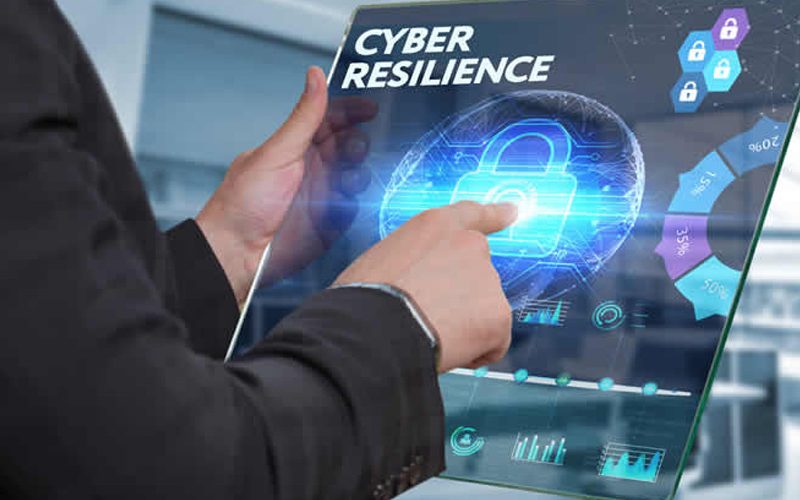Given that breaches are inevitable, the main objective of cyber resilience is to reduce risk or loss in case of an attack.
To support business acceleration (enterprise resiliency), an organization must be able to anticipate, respond to, and recover from cyber threats. A cyber-resilient organization can adjust to crises, dangers, adversities, and challenges that are both known and unknowable. The ultimate objective of cyber resilience is to assist a company in thriving in the face of challenging circumstances (crisis, pandemic, financial volatility, etc.). Maintaining your capacity to provide products and services is the goal of cyber resilience. This may entail being able to restart normal procedures as well as changing or modifying them continually as necessary even when regular methods have failed, for as in times of emergency or after a security compromise.
Making your network and company robust is the best method to handle inevitably occurring security issues and breaches. This entails assessing the interdependencies and vulnerabilities inside your network from a corporate-wide, high-level perspective. It includes testing backup solutions, running scenarios, interacting with staff, setting financial priorities, and working with the board of directors. Your capacity to quickly recover from setbacks is what we call resilience. Yet far too many business leaders see cybersecurity as a separate issue from data security. Too few see it as a danger to their company’s operations. In the worst circumstances, it’s just a box to check for compliance. However, keep in mind that when cybercriminals compromise or take down crucial systems, the damage to your company goes far beyond stolen data, potential fines, or brief consumer annoyance. Being unprepared and getting caught off guard when a cyberattack occurs results in long-lasting operational shutdowns, revenue loss, unanticipated legal and technical expenses, communication turmoil, and most importantly, canceled services and unmet consumer expectations. Contrarily, cyber resilience recognizes that we will never reach a point where all assaults are prevented and that the best course of action should be to reduce risk or loss in the unavoidable event that an attack is successful. It takes into account how we may lessen the harm that an attack causes and increase the viability of crucial functions during or after an attack. It also takes into account how we can swiftly resume as much mission or business functionality following an attack. When an organization adopts a cyber resilience mindset, a large part of its attention is given to what it can do in advance of an attack to make life difficult for any attackers. Redundancy is incorporated into the system so that it can continue to run even if a piece of it is removed. To prevent the spread of harmful activity, they segregate their networks and implement security policies that limit who can access what. To guarantee that only authorized users with authorized businesses can use the system, they implement robust access-control methods. To be able to identify when their resources are under stress, they keep an eye on how their systems are operating in ideal circumstances. They encrypt their data so that it cannot be stolen and back it up so that it can be recovered in the event of a loss. These preventative measures work in concert to weaken the attacker’s chances of success. They make it difficult for intruders to get inside. If they can enter, they restrict their ability to move. If they can maneuver, it will be difficult for them to act abnormally. In addition, even if they are successful in carrying out their evil behavior, their robbery is futile, their denial of services is mitigated by duplicate parts, or their ransomware is stopped by the availability of data at another place.
As standard security measures are insufficient to assure proper network, data, and information security, cyber resilience is crucial. In reality, a lot of CISOs and IT security teams today presume that attackers will ultimately get illegal access to their firms. In actuality, detrimental cyber events have a daily negative influence on the availability, confidentiality, and integrity of enterprises. These occurrences can be produced by people or a consumer, nature, or a combination of both, and can be intentional or accidental (such as a faulty software update).







